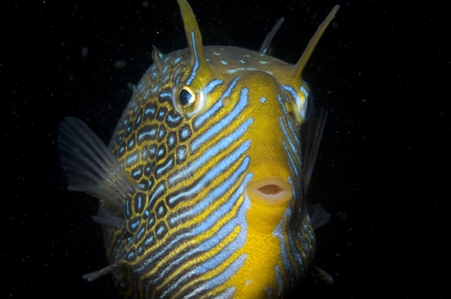General Description
Body encased in a rigid box-like carapace comprised of large sculptured bony plates, with large recurved spines on bony ridges; dorsal and anal fins opposite and far back on the body; bony plates on tail base absent or rudimentary; lines on snout diagonal. Males with distinct hump on snout and with orange and blue caudal fin. Female dark brown with white or yellowish-white stripes and wavy lines, lines frequently circular dorsally, yellow to bright orange below. To 15 cm.
Biology
This species is quite abundant, especially in very shallow water. It feeds on benthic invertebrates.
Habitat
Shallow seagrass beds in sheltered bays and harbours, and along the coast in depths of 0-15 m.
Seagrass meadows
Distribution guide
Southern Australia.
Species Group
Depth
Water Column
Max Size
15 cm
Commercial Species
No
Global Dispersal
Native to Australia
Conservation Status
- DSE Advisory List : Not listed
- EPBC Act 1999 : Not listed
- IUCN Red List : Not listed










